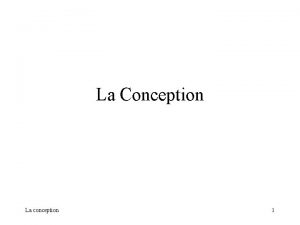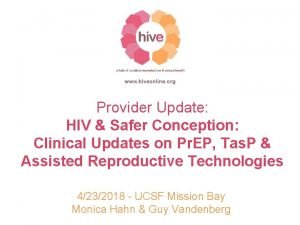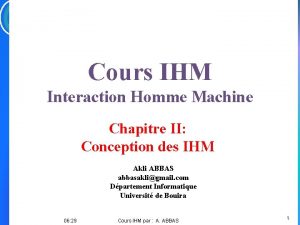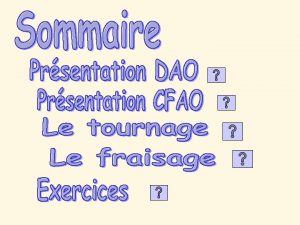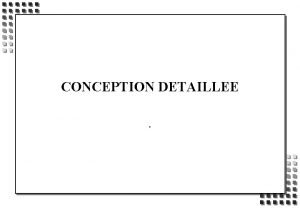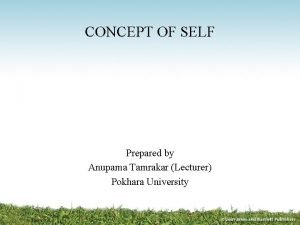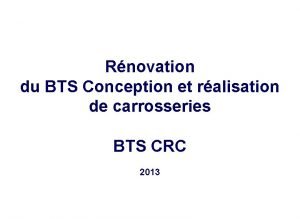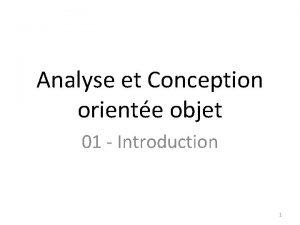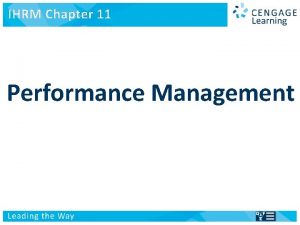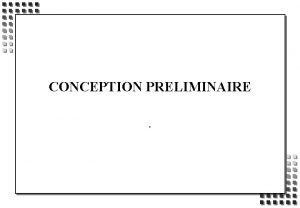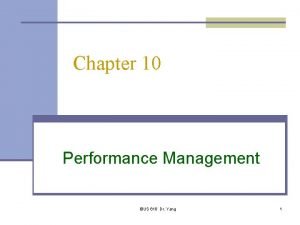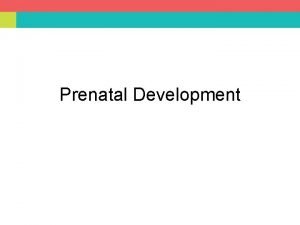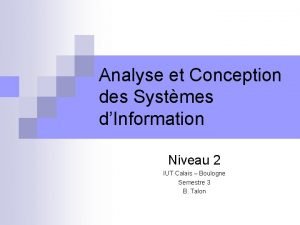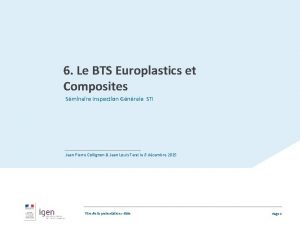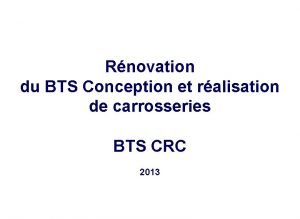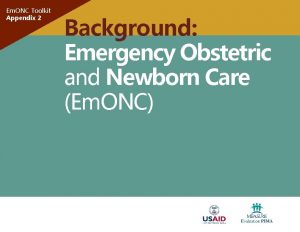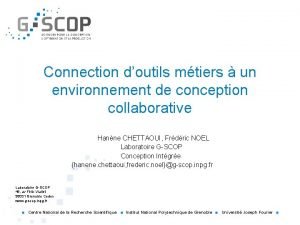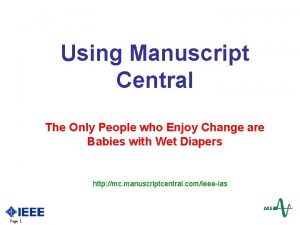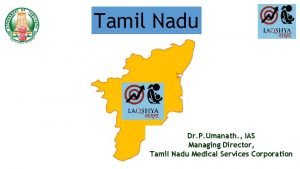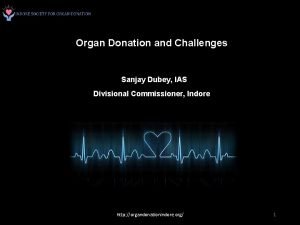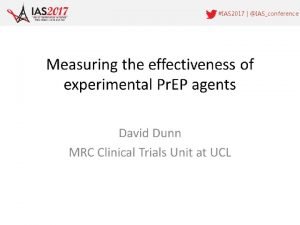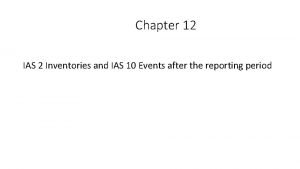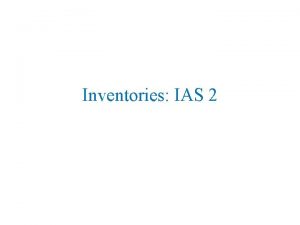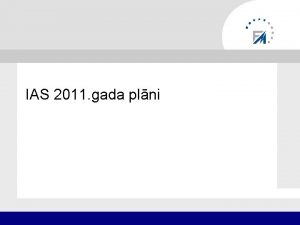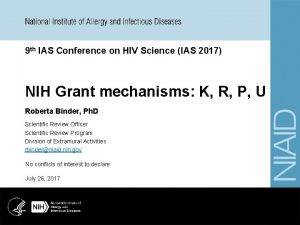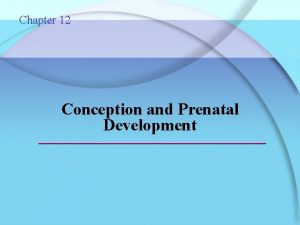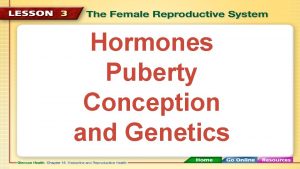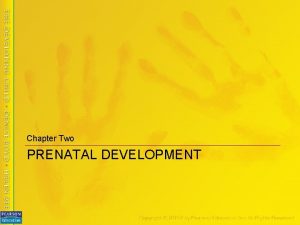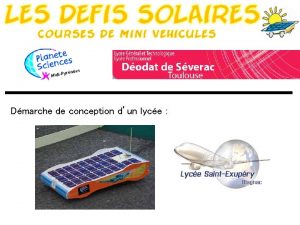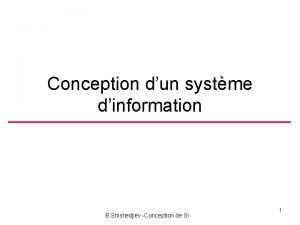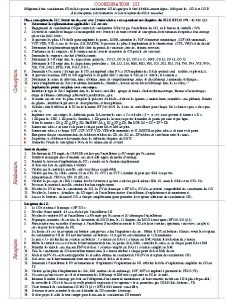90 90 90 and Conception 2017 IAS Conception

































- Slides: 33

90 -90 -90 and Conception 2017 IAS Conception Meeting Paris, France July 25 th, 2017 Reuben Granich, MD, MPH Somya Gupta MA International Association of Providers of AIDS Care (IAPAC)

Disclosures • No Gilead Funding • No Gates Foundation Funding • No Research Trial funding

Outline • • Women and HIV Policy work Global 90 -90 -90 status report Conclusions

Treatment matters Data: Hargrove AIDS 2010; Model: Williams JID 2006.

HIV treatment reduces viral load and heterosexual transmission (2003) Quinn et al. NEJM. 2003; 342(13): 921 -929.

Apollo 13 strategy: “Working the Ending AIDS problem” • Set clear and shared goals • Change business as usual • Establish accountability and use open data • Accelerate pace of science to service delivery • Budget for success • Leadership on goals, priorities, execution and accountability Failure is not an option!

Global HIV Status Report (2015/16) Half empty: Half full: – 1. 8 million infections per – 19. 5 million on ART (50%) year – ~70% of PLHIV know status – 37 million PLHIV – 19 billion USD per year – 1 million HIV deaths – TB among PLHIV down – 1. 2 million HIV/TB illnesses 32% from 2005 – 400, 000 HIV/TB deaths Half full, half empty? . . it’s still half! Source: UNAIDS Fact Sheet. http: //www. unaids. org/en/resources/fact-sheet

Millions People living with HIV and people on ART Global access to HIV treatment, 2010 -2016 40 35 30 33 34 35 34 36 37 81% Treatment gap 25 20 19. 5 15 17 15 13 10 8 9 11 5 0 2010 On ART 2011 2012 People living with HIV 2013 2014 2015 People living with HIV on ART 2016

Millions People living with HIV on ART Reported and projected people on ART 32 mn (81%) 35 30 25 27 mn (69%) 19. 5 mn (53%) 20 15 10 8 mn (23%) 5 0 2011 2012 2013 2014 2015 2016 2017 2018 Reported number on ART Trendline for treatment expansion using 2010 -2016 data People on ART to achieve 2020 target (81% on ART) 2019 2020

Can anyone tell me what policy this WHO map is showing? Answer: One policy for polio eradication using t. OPV Source: MMWR July 3, 2015

ART initiation for asymptomatic people ART initiation No. of People with criteria Countries HIV (2016) Irrespective of CD 4 count 58 Consider for >500 5 ≤ 500 32 ≤ 350 (consider for CD 4 ≤ 500) 5 ≤ 350 19 ≤ 300 1 ≤ 200 (consider for CD 4 ≤ 350) 5 ≤ 200 2 Source: published policy Countries Argentina, Australia, Austria, Botswana, Brazil, Bulgaria, Burundi, Cambodia, Canada, China, Croatia, Democratic Republic of Congo, Denmark, Ethiopia, France, Georgia, Germany, Ghana, Haiti, India, Italy, Jamaica, Japan, Kenya, Korea (Republic), Lao PDR, Lesotho, Malawi, Malaysia, Maldives, 29, 800, 000 Mexico, Montenegro, Mozambique, Namibia, Netherlands, New Zealand, (81%) Nigeria, Norway, Panama, Papua New Guinea, Poland, Portugal, Romania, Russia, Rwanda, South Africa, Spain, Sri Lanka, Swaziland, Sweden, Switzerland, Thailand, Turkey, Uganda, United Kingdom, US, Zambia, Zimbabwe 270, 000 Colombia, Greece, Guyana, Hong Kong, Venezuela (0. 7%) Algeria, Angola, Bangladesh, Bhutan, Bolivia, Cameroon, Chile, Cote d’Ivoire, Ecuador, El Salvador, Fiji, Gabon, Honduras, Kazakhstan, Liberia, 4, 400, 000 Madagascar, Mali, Mauritania, Moldova, Myanmar, Nepal, Oman, Pakistan, (12%) Peru, South Sudan, Tanzania, Tunisia, Ukraine, Uruguay, Uzbekistan, Viet Nam 200, 000 (0. 6%) Belize, Costa Rica, Finland, Guinea, Philippines Afghanistan, Benin, Burkina Faso, Djibouti, Dominican Republic, Guatemala, 1, 100, 000 Indonesia, Latvia, Marshall Islands, Morocco, Nicaragua, Niger, Paraguay, (3%) Samoa, Sierra Leone, Tajikistan, Timor-Leste, Tuvalu, Vanuatu 350 (<0. 1%) Macedonia 58, 000 (0. 2%) Belarus, Cape Verde, Cuba, Estonia, Hungary 41, 000 (0. 1%) Comoros, Senegal Guidelines from 127 countries

ART initiation for asymptomatic people 2015 WHO Recommendation : Irrespective of CD 4 count <200, <250 or <300 <350 <500 >500 Irrespective of CD 4 count Source: published policy July 2017 58 countries or 81% of burden

ART initiation criteria in Africa 2015 WHO Recommendation : Irrespective of CD 4 count <200 <350 <500 Irrespective of CD 4 count Source: published policy July 2017

ART initiation for pregnant women ART INITIATION CRITERIA NO. OF COUNTRIES Option B+ 101 Algeria, Angola, Argentina, Australia, Austria, Bangladesh, Benin, Bhutan, Bolivia, Botswana, Brazil, Bulgaria, Burundi, Cambodia, Canada, Cameroon, Chile, China, Costa Rica, Cote d’Ivoire, Croatia, Democratic Republic of Congo, Denmark, Dominican Republic, Ecuador, El Salvador, Ethiopia, France, Fiji, Finland, Gabon, Germany, Georgia, Greece, Ghana, Guatemala, Haiti, Honduras, India, Indonesia, Italy, Jamaica, Japan, Kazakhstan, Kenya, Korea, Lao PDR, Lesotho, Liberia, Madagascar, Malawi, Malaysia, Maldives, Mali, Mauritania, Mexico, Moldova, Montenegro, Morocco, Mozambique, Myanmar, Namibia, Nepal, Netherlands, New Zealand, Nicaragua, Nigeria, Norway, Pakistan, Panama, Papua New Guinea, Paraguay, Peru, Philippines, Poland, Portugal, Romania, Russia, Rwanda, Spain, Sri Lanka, South Africa, South Sudan, Swaziland, Sweden, Switzerland, Uganda, UK, US, Uruguay, Venezuela, Tajikistan, Tanzania, Thailand, Tunisia, Turkey, Ukraine, Viet Nam, Zambia, Zimbabwe ≤ 500 4 ≤ 350 14 ≤ 300 1 4 3 ≤ 200 (consider for ≤ 350) ≤ 200 Source: published policy Colombia, Hong Kong (China), Oman, Uzbekistan Afghanistan, Belize, Burkina Faso, Djibouti, Guinea, Guyana, Latvia, Marshall Islands, Niger, Samoa, Sierra Leone, Timor-Leste, Tuvalu, Vanuatu Macedonia Belarus, Cape Verde, Estonia, Hungary Comoros, Cuba, Senegal

Policy Lag in LMICs (85 countries) WHO 2009 guidelines WHO 2013 guidelines WHO 2015 guidelines Date of publication October, 2009 June, 2013 September, 2015 ART eligibility criteria <350 cells/mm 3 <500 cells/mm 3 Irrespective of CD 4 count 25 [3 -68] months (n = 50) 15 [0 -43] months (n = 59) 12 [1 -20] months (n = 31) 0 17 (3% burden) 47 (15% burden) Average time to adopt the WHO guidelines Countries yet to adopt the recommendation Data as of July, 2017

90 -90 -90 and Continuum of Care Targets 90 % Know status 90% 90 % On treatment 81% 90 % Virally suppressed 73%

People living with HIV diagnosed positive (2010 -2017) UNAIDS target 90%-100% 70 -89% Below 70% Data not available Incomplete or no continua People living with HIV diagnosed positive (Target 90%) 85 (77% global HIV burden in 2016) with complete care continua

Mapping on ART and viral suppression 90 -90 -90 targets (85 countries) ART coverage >81% and viral suppression >73% ART coverage 60 -80% and viral suppression 50 -72% ART coverage <60% and viral suppression <50% Incomplete or no continua 85 countries with complete care continua

Proportion of people living with HIV diagnosed and on ART 100% TARGET UNAIDS target: 81% 80% 70% 60% UNAIDS target: 90% Proportion of PLHIV on ART 90% 50% 40% 30% 20% 10% 0% 0% 10% 20% 30% 40% 50% 60% 70% Proportion of PLHIV diagnosed 87 countries with data on 1 st and 2 nd 90 80% 90% 100%

100% 90% TARGET 80% UNAIDS target: 73% 70% 60% UNAIDS target: 81% Proportion of PLHIV with viral suppression Proportion of people living with HIV on ART and with viral suppression 50% 40% 30% 20% 10% 0% 0% 10% 20% 30% 40% 50% 60% 70% Proportion of PLHIV on ART 85 countries with complete care continua 80% 90% 100%

Documenting and grading continua methods

Next generation cascades. . . • • Key populations (MSM, FSW, PWID) HIV and TB Pediatric Sub-national Fast Track Cities Age categories Pregnant women and children

MSM living with HIV virally suppressed (Target: 73%) 73%-100% 50 -72% Below 50% Data not available

Age category cascades allow for improved focus

ART coverage among adolescents and young adults (15 -24 years) in 10 countries 90% 84% ART coverage among 15 -24 years 90 -90 -90 target: 81% 77% 80% 72% 70% 71% 64% 61% 60% 70% 68% 50% 43% 40% 42% 40% 30% 34% 32% 28% 21% 17% 20% 10% 0% Uganda Swaziland Botswana Kenya Cote d'Ivoire Malawi Ethiopia Cameroon Namibia South Africa Blue bars show ART coverage among adolescents and young adults (2012 -2017 data) while red lines show national ART coverage among all PLHIV. UNAIDS 90 -90 -90 target for 2020 is 81% ART coverage.

Viral suppression among adolescents and young adults (15 -24 years) in 8 countries 79% 90 -90 -90 target: 73% 63% 59% 61% 51% 29% 25% Blue bars show viral suppression among adolescents and young adults (2012 -2017 data) while red lines show viral suppression among all PLHIV. UNAIDS 90 -90 -90 target for 2020 is 73% viral suppression. Data unavailable for Cameroon and Ethiopia.

HIV, TB and HIV/TB: New cascade

Phases of HIV Epidemic 1980 -2020 Discovery Devastation 1980 1981 AIDS 1983 HIV 1983 WHO surveillance 1983 Denver Principles 1980 100, 000 PLHIV No treatment (Tx) 1985 HIV test 1987 AZT 1987 WHO GPA 1987 TASO Uganda 1985 Reagan mentions AIDS 1986 AIDS Quilt 1986 ACT-UP 1985 Nearly million PLHIV No treatment 1990 1992 AIDS #1 killer US men 25 -44 years old 1993 US Office of National AIDS Policy 1994 AZT to prevent MTCT 1990 Millions PLHIV No treatment 1995 Protease inhibitor 1996 Vancouver triple therapy 1996 US home HIV test 1997 AIDS deaths decline 40% in US 1998 TAC South Africa 1995 20 M PLHIV No Tx Policy Hit early, hit hard. Almost no access to treatment in low and middle income countries Granich Lancet 2017 2000 2001 Special UN Session “global emergency” 2002 Leading cause of death 2002 Global Fund established 2003 PEPFAR 2003 WHO 3 x 5 2000 34. 3 M PLHIV 1 M (3%) Tx Africa 50, 000 (2%) 2003 WHO CD 4 <200 End of AIDS 2005 1 st generic ARVs 2005 Circumcision RCTs 2006 Tas. P proposed as HIV control strategy 2008 Swiss statement 2009 Attia metaanalysis ART prevents transmission 2009 WHO proposes using treatment to eliminate HIV 2005 40. 3 M PLHIV 2 M (5%) Tx 2009 WHO CD 4 <350 2015 2011 HPTN 052 proves ART blocks transmission 2012 Pr. EP approved in US 2010 UNAIDS Treatment 2. 0 with treatment as prevention 2014 UNAIDS 90 -90 -90 targets 2015 Fast Track Cities with 60+ cities 2015 STAR and TEMPRANO 2015 Health. Gap access to treatment is human right 2016 18. 2 M (49%)people on treatment 2016 Cumulative 39 million AIDS deaths 2010 33. 3 M PLHIV 7. 5 M (23%) treatment 2020 90 -90 -90 reached 2020 95 -95 -95 targets affirmed 2020 37 M PLHIV 27 (81%) Tx 2015 36 M PLHIV 16 M (44%) Tx 2012 US Treat All 2013 WHOCD 4 <500 2015 WHO Irrespective CD 4

Ending AIDS as a major public health problem Feasible: “capable of being done or carried out” --Merriam-Webster’s Dictionary

Thank you HIV 90 -90 -90 watch www. HIV 90 -90 -90 watch. org HIV Policy Watch www. HIVpolicywatch. org

Leadership matters

You get what you pay for. . . Number of countries Spending on ART 75% 3/4 of the countries spend less than 26% of HIV budget on ART Proportion of HIV budget Williams, unpublished data, UNAIDS GARPR database 2014

Proportion of HIV spending on care and treatment, HIV spending on care and treatment per PLHIV
 Conception générale et détaillée
Conception générale et détaillée Ias 16 strengths and weaknesses
Ias 16 strengths and weaknesses Humanistic conception of curriculum
Humanistic conception of curriculum Conception
Conception Conception des ihm
Conception des ihm Conception et fabrication assistées par ordinateur
Conception et fabrication assistées par ordinateur Conception détaillée logiciel
Conception détaillée logiciel Self conception definition
Self conception definition Bts crc
Bts crc Karl marx materialist conception of history
Karl marx materialist conception of history Marxist alienation
Marxist alienation Conception orienté objet
Conception orienté objet Karl marx materialist conception of history
Karl marx materialist conception of history Implicit values definition
Implicit values definition Conception universelle de l'apprentissage
Conception universelle de l'apprentissage Pcn role conception
Pcn role conception Conception of curriculum
Conception of curriculum Conception modulaire définition
Conception modulaire définition Conception preliminaire
Conception preliminaire Contextual model of expatriate performance management
Contextual model of expatriate performance management Conception for dummies
Conception for dummies Conception uml gestion de restaurant
Conception uml gestion de restaurant Conception et fabrication assistées par ordinateur
Conception et fabrication assistées par ordinateur Conception
Conception Bts europlastics et composites
Bts europlastics et composites What part
What part éco conception
éco conception Bts conception et réalisation de carrosseries
Bts conception et réalisation de carrosseries Removal of retained products of conception
Removal of retained products of conception Mtiers
Mtiers Submitted by and submitted to example
Submitted by and submitted to example Umanath ias profile
Umanath ias profile Sanjay dubey ias
Sanjay dubey ias Ips alankrita singh
Ips alankrita singh
